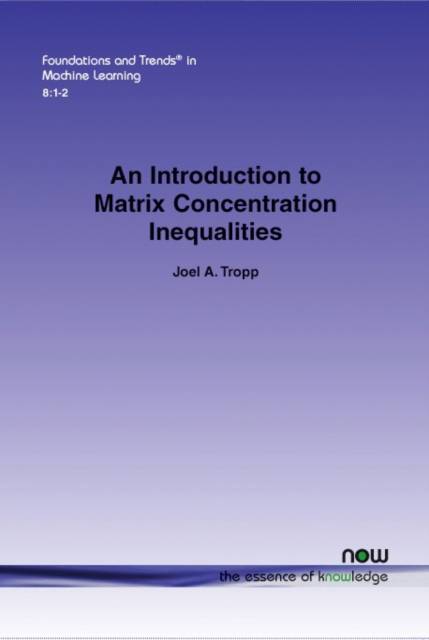
- Afhalen na 1 uur in een winkel met voorraad
- Gratis thuislevering in België vanaf € 30
- Ruim aanbod met 7 miljoen producten
- Afhalen na 1 uur in een winkel met voorraad
- Gratis thuislevering in België vanaf € 30
- Ruim aanbod met 7 miljoen producten
Zoeken
Omschrijving
Random matrices now play a role in many areas of theoretical, applied, and computational mathematics. It is therefore desirable to have tools for studying random matrices that are flexible, easy to use, and powerful. Over the last fifteen years, researchers have developed a remarkable family of results, called matrix concentration inequalities, that achieve all of these goals. This monograph offers an invitation to the field of matrix concentration inequalities. It begins with some history of random matrix theory; it describes a flexible model for random matrices that is suitable for many problems; and it discusses the most important matrix concentration results. To demonstrate the value of these techniques, the presentation includes examples drawn from statistics, machine learning, optimization, combinatorics, algorithms, scientific computing, and beyond.
Specificaties
Betrokkenen
- Auteur(s):
- Uitgeverij:
Inhoud
- Aantal bladzijden:
- 252
- Taal:
- Engels
- Reeks:
- Reeksnummer:
- nr. 25
Eigenschappen
- Productcode (EAN):
- 9781601988386
- Verschijningsdatum:
- 27/05/2015
- Uitvoering:
- Paperback
- Formaat:
- Trade paperback (VS)
- Afmetingen:
- 156 mm x 234 mm
- Gewicht:
- 358 g

Alleen bij Standaard Boekhandel
+ 178 punten op je klantenkaart van Standaard Boekhandel
Beoordelingen
We publiceren alleen reviews die voldoen aan de voorwaarden voor reviews. Bekijk onze voorwaarden voor reviews.











